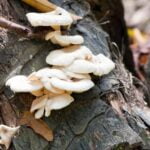Landscaping drainage ditch ideas are essential for maintaining the beauty and functionality of your outdoor space. Proper drainage is crucial for preventing water damage, erosion, and standing water in your yard or garden.
In this article, we will explore various landscaping solutions for drainage ditches, including assessing your landscape for problem areas, incorporating natural or decorative elements, proper construction and maintenance, creative ways to disguise or enhance ditches, utilizing plants and vegetation, eco-friendly ideas, DIY projects for homeowners, and professional landscaping services.
Assessing the drainage issues in your landscape is the first step towards finding effective solutions. Identifying problem areas such as pooling water, erosion, or inadequate slope will help you determine the best course of action. Once you understand the specific challenges in your yard or garden, you can begin to explore landscaping options that not only address drainage problems but also enhance the overall aesthetic of your outdoor space.
Incorporating natural elements like rocks, gravel beds or decorative features like stone pathways can not only improve the functionality of a drainage ditch but also add visual interest to your landscape. Additionally, utilizing plants and vegetation around the ditches can help absorb excess moisture and prevent soil erosion. With proper construction techniques and regular maintenance, you can ensure that your landscaping drainage ditches effectively manage water while complementing your overall design scheme.
Assessing Your Landscape
When it comes to landscaping, proper drainage is essential for maintaining the health and appearance of your outdoor space. Before embarking on any landscaping project, it is crucial to assess your landscape to identify any existing drainage issues and problem areas. Poor drainage can lead to a range of problems such as erosion, water pooling, and damage to plants and structures. By conducting a thorough assessment, you can pinpoint areas in need of attention and address them effectively.
To begin assessing your landscape, start by observing how water flows across your property during rainfall or irrigation. Look for areas where water accumulates or struggles to drain away, as well as any signs of erosion or soil displacement.
It’s also important to consider the slope of your land, as areas with a significant incline may require different drainage solutions than flat terrain. By taking note of these observations, you can gain valuable insight into the specific drainage issues affecting your landscape.
In addition to visual inspections, consider seeking professional assistance to assess your landscape for drainage issues. Landscaping professionals have the expertise and tools needed to accurately identify problem areas and recommend effective solutions.
Whether it’s installing drainage pipes, creating swales, or regrading the land, a landscaping expert can provide valuable guidance on addressing drainage problems in your outdoor space. With a comprehensive assessment in hand, you’ll be better equipped to implement suitable landscaping drainage ditch ideas that will improve the function and aesthetics of your outdoor environment.
Landscaping Solutions for Drainage Ditches
When dealing with landscaping drainage ditch ideas, it’s important to consider incorporating natural or decorative elements to not only address drainage issues but also enhance the overall aesthetic of your outdoor space. One popular landscaping solution for drainage ditches is the use of natural stone or rock to create a visually appealing and functional feature.
By strategically placing rocks or boulders along the length of the ditch, you can help control erosion and guide water flow, creating an eye-catching focal point in your yard.
Another creative idea for incorporating natural elements into your drainage ditch is the use of native plants and vegetation. Planting grasses, shrubs, or flowers alongside the ditch can help absorb excess water, prevent soil erosion, and attract beneficial wildlife to your garden. Additionally, incorporating decorative features such as wooden bridges, ornamental grasses, or water-loving plants can transform a traditional drainage ditch into a charming and tranquil part of your landscape.
For homeowners looking to take their landscaping drainage ditch project to the next level, installing a dry creek bed can be a stylish and effective solution. This involves creating a shallow channel lined with river rocks or pebbles that mimics the appearance of a natural stream. Not only does this add visual interest to your yard, but it also provides an efficient way to manage excess water during heavy rainfalls.
| Landscaping Element | Benefits |
|---|---|
| Natural stone or rock | Controls erosion and guides water flow |
| Native plants and vegetation | Absorbs excess water, prevents soil erosion, attracts wildlife |
| Dry creek bed | Adds visual interest, manages excess water efficiently |
Proper Construction and Maintenance of Drainage Ditches
Choosing the Right Location
When constructing drainage ditches, it is crucial to choose the right location within your landscape. Look for areas where water tends to accumulate or flow excessively during heavy rainfalls. This will ensure that the ditch effectively redirects water away from your property and prevents soil erosion.
Correct Sizing and Sloping
The size and slope of your drainage ditch are also important factors to consider. The ditch should be large enough to handle the expected volume of water without overflowing or causing backup. Additionally, it should be sloped properly to allow water to flow freely towards an appropriate outlet without causing any standing water issues.
Regular Cleaning and Clearing
To keep your drainage ditch functioning efficiently, regular cleaning and clearing of debris are necessary. Leaves, branches, and other natural debris can clog the ditch and impede its ability to divert water. Consider implementing a schedule for maintenance tasks such as removing debris and inspecting for any signs of damage.
Inspecting for Damage
Periodic inspections for damage or deterioration are essential in keeping your drainage ditch in optimal condition. Look for any signs of erosion, sediment buildup, or blockages that may affect the performance of the ditch. It is important to address these issues promptly to prevent further damage and maintain proper drainage within your landscaping.
By focusing on proper construction techniques and regular maintenance practices, you can ensure that your drainage ditch remains effective in managing excess water flow while preserving the aesthetic appeal of your landscape.
Creative Ways to Disguise or Enhance Drainage Ditches
When it comes to landscaping drainage ditch ideas, there are various creative ways to disguise or enhance these essential elements in your outdoor space. While drainage ditches serve a vital function in preventing water accumulation and protecting your landscaping features, they can also be aesthetically integrated into the overall design of your property.
Decorative Rock or Gravel
One effective way to enhance the appearance of a drainage ditch is by incorporating decorative rock or gravel along its edges. This not only helps to stabilize the soil and prevent erosion but also adds visual interest to an otherwise functional element. By selecting rocks or gravel in complementary colors and textures, you can effortlessly blend the ditch into the surrounding landscape.
Customized Pathways
Another innovative way to disguise a drainage ditch is by transforming it into a customized pathway. By strategically placing stepping stones or pavers over the ditch, you can create an inviting walkway that not only allows for proper water flow but also adds charm and functionality to your outdoor space.
Vegetation and Plantings
Incorporating plants and other vegetation around the perimeter of the drainage ditch can help soften its appearance and integrate it seamlessly into your landscaping design. Consider planting ornamental grasses, wildflowers, or low-growing shrubs along the edges of the ditch to add color, texture, and natural beauty while promoting effective water management. Whether you choose native species or ornamental varieties, carefully selected plantings can elevate the look of your drainage ditch while supporting environmental sustainability.
By exploring these creative landscaping solutions for drainage ditches, homeowners can successfully blend form and function in their outdoor spaces while effectively managing water flow. Whether through decorative rock installations, customized pathways, or strategic plantings, disguising or enhancing drainage ditches is an achievable goal that contributes to both practicality and visual appeal in landscaping design.
Utilizing Plants and Vegetation in and Around Drainage Ditches
When it comes to landscaping drainage ditch ideas, incorporating plants and vegetation in and around drainage ditches can serve both functional and aesthetic purposes. Planting along the edges of drainage ditches can help stabilize the soil, prevent erosion, and add a natural look to the landscape. It is important to choose plants that can tolerate fluctuating water levels, such as native grasses, sedges, rushes, and wetland wildflowers.
In addition to providing erosion control, vegetation in and around drainage ditches can also improve water quality by filtering out pollutants and excess nutrients. This helps prevent contamination of water bodies downstream. Furthermore, the presence of vegetation creates habitats for various wildlife species such as birds, insects, and amphibians, contributing to overall biodiversity in the area.
Incorporating a variety of plant species with different root systems can further enhance the performance of the drainage ditch. For example, deep-rooted plants like trees and shrubs can help absorb excess moisture from the ground, while shallow-rooted species like grasses can provide surface stability. Proper maintenance of these plantings is essential to ensure that they continue to provide effective erosion control and water filtration over time.
| Benefits of Vegetation in Drainage Ditches | Examples of Plants for Drainage Ditches |
|---|---|
| Erosion control | Native grasses |
| Water quality improvement | Sedges |
| Wildlife habitat creation | Wetland wildflowers |
Sustainable and Eco-Friendly Drainage Ditch Ideas
When it comes to landscaping drainage ditch ideas, it’s important to consider sustainable and eco-friendly options that can help manage water runoff while also benefiting the environment. Here are some ideas for creating environmentally-friendly drainage ditches:
- Permeable Paving: Utilize permeable or porous materials such as gravel, pavers with gaps, or grass pavers in the construction of your drainage ditch. This allows rainwater to infiltrate into the ground instead of pooling on the surface.
- Rain Gardens: Incorporate rain gardens into your landscape design to capture and absorb excess water from drainage ditches. Planting native flowers, shrubs, and grasses in these areas not only adds aesthetic appeal but also helps filter pollutants from the water.
- Constructed Wetlands: For larger properties, constructing a small wetland area within or adjacent to the drainage ditch can provide an effective way to naturally filter and clean stormwater runoff. This habitat can also attract wildlife and create a more biodiverse landscape.
By implementing these sustainable and eco-friendly landscaping drainage ditch ideas, homeowners can not only improve their property’s water management but also contribute towards environmental conservation efforts in their local area. Whether through adding permeable paving, incorporating rain gardens, or constructing wetlands, there are numerous options available for creating eco-friendly drainage solutions.
DIY Landscaping Drainage Ditch Projects for Homeowners
If you are facing drainage issues in your landscaping, it’s crucial to address them as soon as possible to avoid potential damage to your property. One cost-effective and efficient way for homeowners to tackle these problems is by implementing DIY landscaping drainage ditch projects. Here are a few ideas to help you get started:
- Assess the problem areas: Before starting any project, carefully assess the problem areas in your landscaping where water tends to pool or flow unevenly. This will help you determine the best locations for installing drainage ditches.
- Choose natural elements: Instead of opting for traditional, unattractive drainage solutions, consider incorporating natural elements such as river rocks or pebbles to line your drainage ditches. These can add aesthetic appeal while serving a practical purpose.
- Install French drains: A French drain is a simple yet effective DIY solution for redirecting excess water away from your property. By digging a trench and filling it with gravel and perforated pipe, you can create an underground drainage system that effectively manages water flow.
By taking on these DIY landscaping drainage ditch projects, homeowners can improve their properties’ appearance while effectively managing excess water. However, if these solutions seem overwhelming or if your landscape requires more extensive work, it may be beneficial to seek professional landscaping services for guidance and assistance in constructing and maintaining proper drainage ditches.
Professional Landscaping Services for Drainage Ditch Installation and Maintenance
In conclusion, managing proper drainage in landscaping is essential for the health and attractiveness of your outdoor space. An effective way to address drainage issues is by incorporating creative landscaping drainage ditch ideas that not only serve their purpose but also enhance the overall aesthetic of your landscape.
Assessing your landscape for drainage problems is the first step in finding solutions. Whether it’s pooling water, erosion, or soggy areas, identifying these issues will help you determine the best approach for addressing them. From natural elements like rocks and gravel to decorative features such as ornamental grasses and flower beds, there are various landscaping solutions for drainage ditches that can be tailored to fit your specific needs.
Utilizing plants and vegetation in and around drainage ditches can also help manage water flow and provide additional visual appeal to your landscape. By choosing water-loving plants like cattails or irises, you can create a beautiful and functional buffer along the edges of your drainage ditch. Additionally, sustainable and eco-friendly drainage ditch ideas such as rain gardens or permeable paving can further contribute to effective water management while reducing environmental impact.
Whether you choose to tackle DIY landscaping drainage ditch projects or seek professional landscaping services for installation and maintenance, it’s important to prioritize proper construction and upkeep of your drainage system. By implementing these landscaping solutions for drainage ditches, you can effectively manage excess water while adding beauty and value to your outdoor environment.
Frequently Asked Questions
How Do I Make My Drainage Ditch Look Nice?
One way to make your drainage ditch look nice is by landscaping around it. You can plant grass, shrubs, or flowers along the edges of the ditch to add some visual appeal. Adding rocks or stones along the banks can also enhance the aesthetic of the area and prevent erosion.
How to Design Drainage Ditch?
When designing a drainage ditch, it’s important to consider the slope and flow of water in the area. You’ll want to plan for a gentle slope to ensure proper drainage and prevent erosion. Incorporating natural materials like rocks, grasses, and native plants can help blend the ditch into the surrounding landscape.
What Can I Plant in Drainage Ditch?
There are several types of plants that are suitable for planting in a drainage ditch. Some options include wetland plants like cattails, irises, sedges, and rushes.
These plants are able to tolerate fluctuating water levels and provide habitat for wildlife. Native grasses like switchgrass or cordgrass also do well in damp conditions and can help stabilize the soil in the ditch.

Welcome to my gardening blog! I am passionate about plants and enjoy sharing my knowledge and experiences with others. In this blog, I will write about everything related to gardening, from tips on how to get started to updates on my own garden projects.





